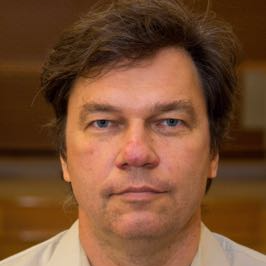Two-Dimensional Materials: Synthesis, Characterization and Device Applications
A special issue of Crystals (ISSN 2073-4352). This special issue belongs to the section "Inorganic Crystalline Materials".
Deadline for manuscript submissions: 15 May 2024 | Viewed by 1981
Special Issue Editors
Interests: two-dimensional material synthesis and related thin-film device development; thin-film electronic and electrochemical devices
Interests: synthesis and application of graphene; h-BN; graphene/h-BN heterostructure and other two-dimensional materials
Interests: molecular beam epitaxy of III-V semiconductor compounds; growth on lattice mismatched substrates; strained layer superlattices; carrier recombination and transport in semiconductor heterostructures; optoelectronic devices and integrated circuits
Special Issues, Collections and Topics in MDPI journals
Special Issue Information
Dear Colleagues,
The fast development and surges of new two-dimensional materials provide exciting opportunities. Two-dimensional materials have shown extraordinary performance in energy storage, sensing, data processing, and flexible devices. This performance, and that of devices fabricated with 2D materials, depends on the synthesis process used, nanoscale characterization, and advanced fabrication techniques. This Special Issue on recent advances in 2D materials focuses on the synthesis, characterization, and device applications. It will be devoted to publishing original research articles or communications on two-dimensional materials with aspects of novel synthetic strategies and post-treatment, nanoscale imaging, in situ characterization, and device applications.
The 2D materials of interest include, but are not limited to:
- Graphene and its derivatives (graphene oxide, reduced graphene oxide, graphene quantum dot);
- Two-dimensional nitrides, oxides, and carbides;
- Transition metal dichalcogenides;
- Xenes;
- Two-dimensional Au, Ag Nanosheets.
Dr. Yijing Y. Stehle
Dr. Fangzhu Qing
Dr. Dmitri Donetski
Guest Editors
Manuscript Submission Information
Manuscripts should be submitted online at www.mdpi.com by registering and logging in to this website. Once you are registered, click here to go to the submission form. Manuscripts can be submitted until the deadline. All submissions that pass pre-check are peer-reviewed. Accepted papers will be published continuously in the journal (as soon as accepted) and will be listed together on the special issue website. Research articles, review articles as well as short communications are invited. For planned papers, a title and short abstract (about 100 words) can be sent to the Editorial Office for announcement on this website.
Submitted manuscripts should not have been published previously, nor be under consideration for publication elsewhere (except conference proceedings papers). All manuscripts are thoroughly refereed through a single-blind peer-review process. A guide for authors and other relevant information for submission of manuscripts is available on the Instructions for Authors page. Crystals is an international peer-reviewed open access monthly journal published by MDPI.
Please visit the Instructions for Authors page before submitting a manuscript. The Article Processing Charge (APC) for publication in this open access journal is 2600 CHF (Swiss Francs). Submitted papers should be well formatted and use good English. Authors may use MDPI's English editing service prior to publication or during author revisions.
Keywords
- two-dimensional materials
- synthesis
- top-down
- bottom-up
- transistor
- two-dimensional devices
- nanofabrication
- applications of 2D materials







